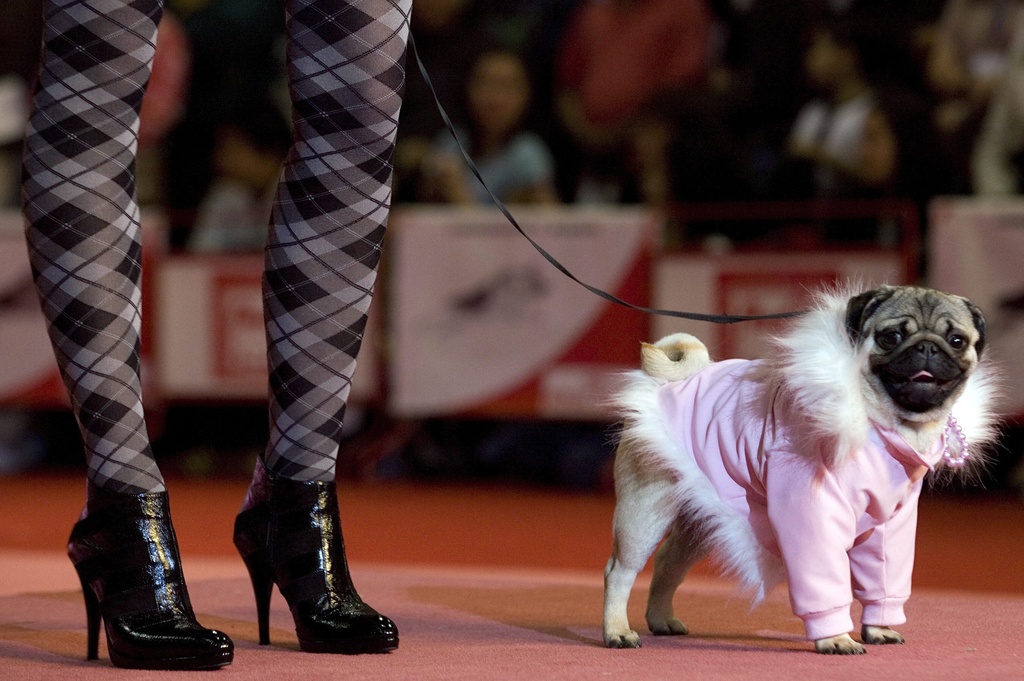Swiss seeks to recreate Noah’s Ark

Taxidermist Christian Schneiter harbours the ambition of creating his own Noah’s Ark, for which he has already prepared over 3,000 animals.
Schneiter, from northwestern Switzerland, has not only won a European prize for different types of taxidermy but has also explored creating fantasy animals and anthropomorphic creatures – animal heads mounted on shop dummies.
At the 2010 European competition of taxidermy, held in Italy, Schneiter became the first Swiss to win the Schwarz Taxidermy Award, which is given to taxidermists who work in at least five different categories.
While taxidermists often specialise in birds, mammals or mammal heads only, Schneiter came top in all categories.
“I prepare all sorts of animals and have to be good at everything for my clients. No one cares if I am European champion for preparing dead mice,” he tells swissinfo.ch.
Schneiter is a private taxidermist who started his collection 24 years ago.
He now runs his own foundation and approaches zoos and private breeders to collect the corpses of animals when they die.
“I might receive a squirrel, then a robin, a lynx for a museum or a chamois head for a hunter etc, so I must have a good level in everything,” he says.
Legacy
Animals and the study of animals are Schneiter’s passion. It started with birds, when he discovered ornithology aged seven.
At 13, when he needed to find an apprenticeship, he looked for something linked to his passion.
“This job allows me to share my zoological knowledge with future generations. These animals will survive me,” he says.
“It’s the best legacy I can make of my love of animals; people will be able to see my work and understand how I perceived animals.”
Thanks to zoos and contacts with private breeders, Schneiter was able to extend his collection to include exotic animals.
Schneiter set up his Noah’s Ark Foundation eight years ago to fund his collection and make it into a museum. “I have always tried to sell a minimum of animals, just to earn enough to live on, so as to increase my collection,” he says.
Noah’s depot
“The initial project was to create a Noah’s Ark here in the Jura, to say it had moved from Mount Ararat to the Jura region and to make a 70-metre long boat with four decks,” he told swissinfo.ch.
Unfortunately, Schneiter didn’t find enough people to support the project and Jura being one of the poorest cantons, it was difficult to find funds.
At present, Schneiter stores his animals in what he calls “Noah’s depot”, a 70-metre long museum.
But he hasn’t given up on his idea.
“It would be a national feature: we would have a huge boat on Mount Jura with the maximum possible different sorts of animals, in pairs, like in the Bible,” he enthuses.
Talking about the extent of his collection, Schneiter says a collection is never finished, you can always find new interesting positions to bring the animals alive to museum visitors.
“Here, we have a bearded tit hanging on a reed. My taxidermist colleagues wouldn’t normally do something so difficult.
“I like a challenge and making this collection an original one.”
Schneiter also recreates animals which no longer exist. He has made a dodo, a bird extinct since the 17th century, and is going to recreate the great auk, an 80-centimetre penguin, extinct since the 19th century.
“I put together feathers of birds very close to the extinct species, take measurements from old preparations from the beginning of the 20th century… there are only about 20 greak auks in museums worldwide. You cannot tell the difference.”
Loan sharks
Schneiter’s latest success is his anthropomorphic “Manimal” collection, made of 104 animal heads mounted on shop dummies.
Loan shark takes a rather literal meaning when you come face to face with a shark in a suit sitting at a desk.
A crocodile-banker, a dog-policeman and a lion-footballer (referring to the Cameroon team, the Indomitable Lions) are among the items in the Manimal collection, which attracted hundreds of thousands of people when it was exhibited in Martigny and Chur.
Another part of the exhibition presents “literary animals”, featuring Harry Potter’s white owl and the characters of La Fontaine’s fables, staged to illustrate the text.
Among flying hedgehogs and three-headed sparrowhawks, one creature combines a cat’s head, cormorant wings, a rat’s tail, roe deer legs, deer antlers, rabbit ears and fox’s teeth.
Schneiter explains he needs to find a balance, so that the parts fit with one another.
“You cannot give wings to an antelope or a lion… No animal heavier than five to eight kilos can fly,” he says with a straight face.
The next exhibition will feature mythical animals like unicorns or griffins. They will be presented alongside the legends in which they feature.
Preparing a small animal, like a bird, takes a day. A polar bear or a tiger can take up to two weeks.
Schneiter sculpts a copy of the skinless animal in expansive foam, before dressing the sculpture with its skin.
Animals with longer hair are easier: they demand less precision because their anatomy is less visible. Animals with short hair, like gazelles, need to have their muscles shown.

In compliance with the JTI standards
More: SWI swissinfo.ch certified by the Journalism Trust Initiative













You can find an overview of ongoing debates with our journalists here . Please join us!
If you want to start a conversation about a topic raised in this article or want to report factual errors, email us at english@swissinfo.ch.